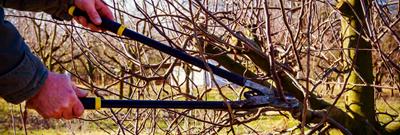
Insulating your shed can transform it from a place for storing tools to a cosy space you can enjoy all year, as anything from an office to an art and craft room or a studio.
Instead of investing in a new garden unit, we invite you to explore our detailed guide on insulating your shed and essential information on the tools, materials and costs involved.
EASY AS HACK
All insulation materials have R-values – the more expensive typically have higher values, meaning they are better at insulating.
R-value stands for ‘resistance value’ and shows how effective an insulation material is.[1]
At a Glance
You’ll need insulation material, such as polystyrene, and tools, including goggles, gloves, sealant, a tape measure, a knife, a staple gun and a saw.
Equipment you may need to insulate your shed
Gather the following equipment to insulate your shed, keeping these tools and materials within reach when you start your project:
- Retractable tape measure
- Utility knife (like a Stanley knife) or scissors
- Staple gun with staples
- Insulation (from budget to premium options)
- Fungicide (if it’s a wooden shed)
- Saw for cutting wooden battens
- Sealant to seal gaps
Don’t forget your safety. Grab gloves, goggles and a face mask to protect yourself from dust. Wearing long sleeves will also help to keep your arms safe. [1]
insulating your shed
If you’re wondering how to insulate a shed, follow these steps:
- Empty the shed and prepare it
- Seal gaps to ensure it is watertight
- Treat wooden sheds with an antifungal product [2]
- Add a breathable membrane if using
- Insulate the walls and roof by measuring, cutting and fitting your chosen insulation between the studs, these are the vertical timbers that form the walls, roof and floor joists [3]
- Lay insulation over the floor and cover it
insulating your shed roof
Start insulating your shed roof by inspecting it for leaks and plugging any small gaps with sealant [4]. Larger gaps may need board. Once it’s watertight, measure the spacing between the studs or vertical timbers.
Sheds with standard 600mm centre studs are easier to fit because they are the size of most insulation materials [5]. However, you may have to trim the material to create a snug fit.
- First, treat the roof and walls of a wooden shed with an antifungal preservative (wear protection) [6].
- If you have the budget, add a breathable membrane to prevent moisture build-up between the shed roof and your insulation [7]. A membrane between the shed’s ceiling and walls will make the room cosy and dry – essential when spending time in it.
- Measure the studs’ depth. Add battens to the sides of each one to allow a 5cm (2 inch) air gap between the installation and the inner wall of the roof and walls.[3] The air gap will allow moisture to escape.
- Cut your insulation material to size using a sharp utility knife. Push the insulation between the studs and use a staple gun to attach it to a wooden shed.[3] You may need to use adhesive to stick the insulation down if it’s metal storage shed or plastic.
insulating your shed walls
Insulating your shed walls is similar to insulating the roof. You measure the space and install a breathable membrane. Some sources recommend a damp-proof membrane (DPM), which could trap moisture with insufficient airflow.
- Remember to create cavities in the insulation material to allow space for wiring and electrical boxes – ask a certified electrician for support if you want to add power to your shed
- Cut the insulation with a serrated knife or utility knife and push it into place
- Seal any gaps with a sealant [8]
Cover the walls and roof with plasterboard, plywood or timber if you want a professional-looking lining. If you want to know how to insulate a summer house, the same steps apply.
why should you insulate your shed?
During the year, the temperatures will change. Sheds get cold and damp in winter, and then hot in summer, so correct insulation provides many benefits, including:
- providing more options for using your shed all year, such as a place to work, use for a hobby or games room
- warmth and minimal moisture means mould, rot, and rust are less likely to occur
- you’ll keep any electrical equipment safe
- the shed will attract fewer pests
Materials for insulating your shed
Depending on your budget, various materials are available for insulating your shed:
breathable membranes
You can cut breathable membranes to size and fit them between the studs to minimise moisture build-up.[2]However, foil-backed foam insulation can achieve the same effect.[9]
mineral wool
Builders mostly use rock or mineral wool in and around chimneys, but you can also use it for insulation and soundproofing in sheds. It can cause itching when you install it, so make sure you wear protective clothing and goggles.[10]
foil-backed pir insulation boards
Made from foam, foil-backed polyisocyanurate (PIR) boards are rigid, easy to cut and widely available, making them a widespread (if more expensive) choice for insulating sheds.[2]
options to avoid
The below options are also available but are best to avoid as they can cause a fire or health hazard.
-
bubble wrap or polyethene
Cheaper materials, such as bubble wrap, polystyrene and polyurethane should be avoided as they can create a fire hazard, especially if your shed has electrics. They can ignite easily and could combust while also being ineffective and potentially allow condensation to form [11]
-
glass fibre (fibreglass wool)
Glass fibre wool is relatively cheap and fire resistant but also harmful to health, so we don’t recommend its use. It contains tiny shards of glass. You must wear goggles, a respirator mask and gloves to handle glass fibre, as it can irritate the eyes, skin and lungs [12]
how much insulation do you need?
The insulation you need depends on the shed walls, roof, and frame thickness.
- Measure the frame’s depth in the walls and roof to find the size of each cavity, which you times by the number required to get a total.
- If the studs are 75mm, leave a 25mm air gap at the back of the insulation and use 50mm insulation.[11] Use a thinner insulation board if your frame is less than 75mm deep.
- Fix a batten the same size as the cavity against the frame so the board is flush with the studs, but the batten creates a gap behind it.[11]
- You might need to insulate the whole shed or the walls or floor. You can insulate floors with underlay and laminate.[11]
- It may be a good idea to focus on where most heat is lost, such as the roof.
how much does it cost to insulate your shed?
The factors contributing to the cost of insulating your shed include the materials you’re using and the space you want to insulate.
One manufacturer has estimated a range of £670 for a small shed to £1,600 (including VAT) for a large shed or summerhouse, based on 10 to 24 sheets of 50mm insulation and 8 to 19 sheets of lining.[11]
Learn more about Ageas home insurance.
faqs
what is the best material for insulating your shed?
The general view is that foil-backed PIR insulation boards are the best material for insulating your shed if you have the budget. Experts also advise adding a breathable membrane.
should i insulate my shed myself or get a professional?
You can insulate your shed independently rather than getting a professional to do so. It mainly depends on your budget and DIY abilities.
what other options can you do to insulate your shed?
You can get a shed heater to help create a warmer environment.
is your garden shed covered by home insurance?
Yes, garden sheds are usually covered by your buildings insurance. Check with your home insurance provider to see what’s included.
Related article: What’s covered by Ageas home insurance for your garden
do i need an air gap when insulating a shed?
You should leave a small air gap to help with moisture control when insulating a shed.
sources
[1] https://www.kingspan.com/au/en/knowledge-articles/what-is-an-r-value/
[2] https://gilliesandmackay.com/how-to-insulate-a-shed
[3] https://gilliesandmackay.com/how-to-insulate-a-shed/#ib-toc-anchor-8
[5] https://www.greenmatch.co.uk/insulation/shed
[6] https://gilliesandmackay.com/how-to-insulate-a-shed/
[7] https://home-gardener.co.uk/sheds/shed-preserver/
[8] https://thriftdiving.com/insulate-shed-start-to-finish/
[11] https://gilliesandmackay.com/how-to-insulate-a-shed/#ib-toc-anchor-3
[12] https://switchable.co.uk/what-is-the-best-insulation-for-your-home


